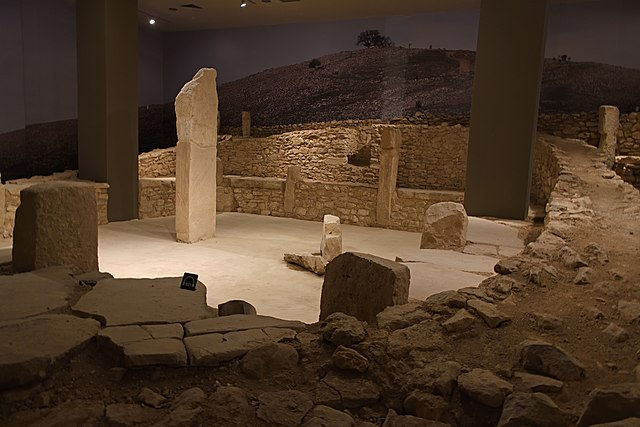Gobeklitepe: The World's First Temple
- Oguzhan Onaldi
- Apr 8, 2022
- 3 min read
The year is 1983, and the place is Sanliurfa, Turkey. Savak Yıldız takes the carved stone he found while plowing his field in Orencik village to the museum, but no one realizes that this stone will change the course of history, and the work begins to be exhibited in the Urfa Museum as an ordinary archaeological find. Meanwhile, German archaeologists who came to the region to research saw the carved stone in the Urfa Museum and wanted to organize an exploration tour of the area. As a result of their discovery, the team begins excavations, unaware that they will find a unique temple under the direction of Klaus Schmidt.

With the excavations that started in 1992 and continue today, the oldest and largest worship center in the world has been reached. Only 6 of the 20 temples discovered in this region attracted the whole world's attention and caused them to follow the excavations with curiosity.
So what do these monumental finds tell us? How does it change the course of history?

Life in Gobeklitepe, located in 12000 BC, taking us back 7000 years from Stonehage and 7500 years from the Egyptian Pyramids, is carried on by gathering and animal husbandry activities in small groups.
Perhaps for the first time in history, people organized so much to bring the heavy stones and high columns used in the temple's construction to Gobeklitepe from the rocky areas about 2 kilometres away without wheelbarrows and beasts of burden. Archaeologist Schmidt, who refutes the thesis that "nomadic communities learned agriculture and settled down" taught in history lessons, speaks of a settled life formed as a result of the frequent gathering of hunter and gatherer groups in belief centers such as Gobeklitepe. Due to people's desire to be close to places of worship and the lack of sufficient resources for everyone, people turn to agriculture. In short, due to people's desire to stay around religious temples, settled life brought agriculture.
Until recently, according to archaeologists, it was accepted that there was no class distinction in the Neolithic Age, but Gobeklitepe also changed this view. Because according to experts, such a complex structure requires specialization in certain areas. In this case, it can be concluded that social classes may have arisen in the public sphere for the first time in history. So, what do these temples have in common, which began to reveal the mystery of the Neolithic Age?

Columns that are thought to represent people, arranged in a circular shape and varying in number from 10 to 12, are knitted in a T shape. In the middle of the building, two obelisks are lined up against each other. Thus, they have a common appearance. The animal figures on the T-shaped stones with a length of 3 to 6 meters and a weight of 40 to 60 tons are pretty striking. Some figures give rise to the assumption that lions lived in Anatolia during the Neolithic Age. According to archaeologists, the animal figures carved on the stones with the relief technique, instead of the hunting-related drawings we are accustomed to seeing on the cave walls, are considered the symbols of the tribes that came to visit the temple, and these figures are the oldest pictures from the Neolithic Age.








Comments